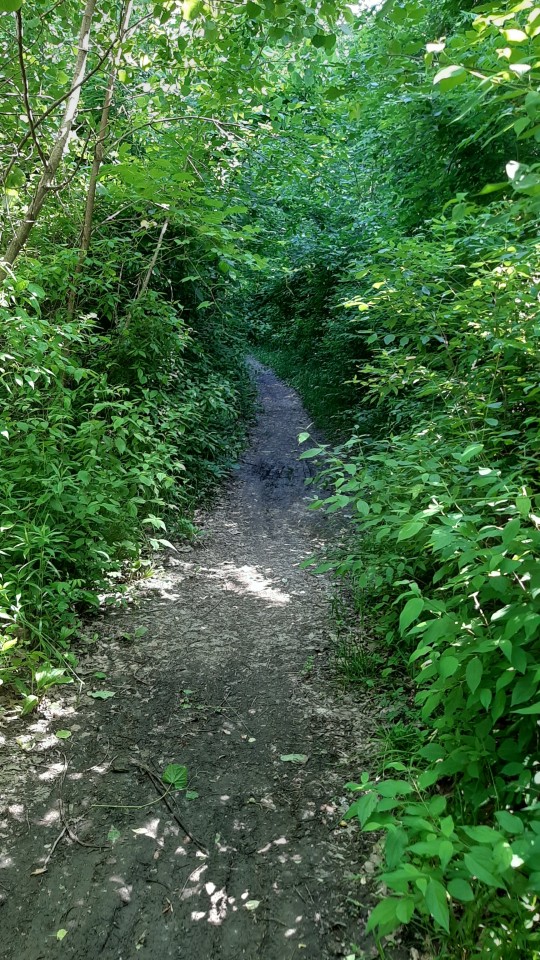#desire paths
Text
How lock-in hurts design

Berliners: Otherland has added a second date (Jan 28) for my book-talk after the first one sold out - book now!

If you've ever read about design, you've probably encountered the idea of "paving the desire path." A "desire path" is an erosion path created by people departing from the official walkway and taking their own route. The story goes that smart campus planners don't fight the desire paths laid down by students; they pave them, formalizing the route that their constituents have voted for with their feet.
Desire paths aren't always great (Wikipedia notes that "desire paths sometimes cut through sensitive habitats and exclusion zones, threatening wildlife and park security"), but in the context of design, a desire path is a way that users communicate with designers, creating a feedback loop between those two groups. The designers make a product, the users use it in ways that surprise the designer, and the designer integrates all that into a new revision of the product.
This method is widely heralded as a means of "co-innovating" between users and companies. Designers who practice the method are lauded for their humility, their willingness to learn from their users. Tech history is strewn with examples of successful paved desire-paths.
Take John Deere. While today the company is notorious for its war on its customers (via its opposition to right to repair), Deere was once a leader in co-innovation, dispatching roving field engineers to visit farms and learn how farmers had modified their tractors. The best of these modifications would then be worked into the next round of tractor designs, in a virtuous cycle:
https://securityledger.com/2019/03/opinion-my-grandfathers-john-deere-would-support-our-right-to-repair/
But this pattern is even more pronounced in the digital world, because it's much easier to update a digital service than it is to update all the tractors in the field, especially if that service is cloud-based, meaning you can modify the back-end everyone is instantly updated. The most celebrated example of this co-creation is Twitter, whose users created a host of its core features.
Retweets, for example, were a user creation. Users who saw something they liked on the service would type "RT" and paste the text and the link into a new tweet composition window. Same for quote-tweets: users copied the URL for a tweet and pasted it in below their own commentary. Twitter designers observed this user innovation and formalized it, turning it into part of Twitter's core feature-set.
Companies are obsessed with discovering digital desire paths. They pay fortunes for analytics software to produce maps of how their users interact with their services, run focus groups, even embed sneaky screen-recording software into their web-pages:
https://www.wired.com/story/the-dark-side-of-replay-sessions-that-record-your-every-move-online/
This relentless surveillance of users is pursued in the name of making things better for them: let us spy on you and we'll figure out where your pain-points and friction are coming from, and remove those. We all win!
But this impulse is a world apart from the humility and respect implied by co-innovation. The constant, nonconsensual observation of users has more to do with controlling users than learning from them.
That is, after all, the ethos of modern technology: the more control a company can exert over its users ,the more value it can transfer from those users to its shareholders. That's the key to enshittification, the ubiquitous platform decay that has degraded virtually all the technology we use, making it worse every day:
https://pluralistic.net/2023/02/19/twiddler/
When you are seeking to control users, the desire paths they create are all too frequently a means to wrestling control back from you. Take advertising: every time a service makes its ads more obnoxious and invasive, it creates an incentive for its users to search for "how do I install an ad-blocker":
https://www.eff.org/deeplinks/2019/07/adblocking-how-about-nah
More than half of all web-users have installed ad-blockers. It's the largest consumer boycott in human history:
https://doc.searls.com/2023/11/11/how-is-the-worlds-biggest-boycott-doing/
But zero app users have installed ad-blockers, because reverse-engineering an app requires that you bypass its encryption, triggering liability under Section 1201 of the Digital Millennium Copyright Act. This law provides for a $500,000 fine and a 5-year prison sentence for "circumvention" of access controls:
https://pluralistic.net/2024/01/12/youre-holding-it-wrong/#if-dishwashers-were-iphones
Beyond that, modifying an app creates liability under copyright, trademark, patent, trade secrets, noncompete, nondisclosure and so on. It's what Jay Freeman calls "felony contempt of business model":
https://locusmag.com/2020/09/cory-doctorow-ip/
This is why services are so horny to drive you to install their app rather using their websites: they are trying to get you to do something that, given your druthers, you would prefer not to do. They want to force you to exit through the gift shop, you want to carve a desire path straight to the parking lot. Apps let them mobilize the law to literally criminalize those desire paths.
An app is just a web-page wrapped in enough IP to make it a felony to block ads in it (or do anything else that wrestles value back from a company). Apps are web-pages where everything not forbidden is mandatory.
Seen in this light, an app is a way to wage war on desire paths, to abandon the cooperative model for co-innovation in favor of the adversarial model of user control and extraction.
Corporate apologists like to claim that the proliferation of apps proves that users like them. Neoliberal economists love the idea that business as usual represents a "revealed preference." This is an intellectually unserious tautology: "you do this, so you must like it":
https://boingboing.net/2024/01/22/hp-ceo-says-customers-are-a-bad-investment-unless-they-can-be-made-to-buy-companys-drm-ink-cartridges.html
Calling an action where no alternatives are permissible a "preference" or a "choice" is a cheap trick – especially when considered against the "preferences" that reveal themselves when a real choice is possible. Take commercial surveillance: when Apple gave Ios users a choice about being spied on – a one-click opt of of app-based surveillance – 96% of users choice no spying:
https://arstechnica.com/gadgets/2021/05/96-of-us-users-opt-out-of-app-tracking-in-ios-14-5-analytics-find/
But then Apple started spying on those very same users that had opted out of spying by Facebook and other Apple competitors:
https://pluralistic.net/2022/11/14/luxury-surveillance/#liar-liar
Neoclassical economists aren't just obsessed with revealed preferences – they also love to bandy about the idea of "moral hazard": economic arrangements that tempt people to be dishonest. This is typically applied to the public ("consumers" in the contemptuous parlance of econospeak). But apps are pure moral hazard – for corporations. The ability to prohibit desire paths – and literally imprison rivals who help your users thwart those prohibitions – is too tempting for companies to resist.
The fact that the majority of web users block ads reveals a strong preference for not being spied on ("users just want relevant ads" is such an obvious lie that doesn't merit any serious discussion):
https://www.iccl.ie/news/82-of-the-irish-public-wants-big-techs-toxic-algorithms-switched-off/
Giant companies attained their scale by learning from their users, not by thwarting them. The person using technology always knows something about what they need to do and how they want to do it that the designers can never anticipate. This is especially true of people who are unlike those designers – people who live on the other side of the world, or the other side of the economic divide, or whose bodies don't work the way that the designers' bodies do:
https://pluralistic.net/2022/10/20/benevolent-dictators/#felony-contempt-of-business-model
Apps – and other technologies that are locked down so their users can be locked in – are the height of technological arrogance. They embody a belief that users are to be told, not heard. If a user wants to do something that the designer didn't anticipate, that's the user's fault:
https://www.wired.com/2010/06/iphone-4-holding-it-wrong/
Corporate enthusiasm for prohibiting you from reconfiguring the tools you use to suit your needs is a declaration of the end of history. "Sure," John Deere execs say, "we once learned from farmers by observing how they modified their tractors. But today's farmers are so much stupider and we are so much smarter that we have nothing to learn from them anymore."
Spying on your users to control them is a poor substitute asking your users their permission to learn from them. Without technological self-determination, preferences can't be revealed. Without the right to seize the means of computation, the desire paths never emerge, leaving designers in the dark about what users really want.
Our policymakers swear loyalty to "innovation" but when corporations ask for the right to decide who can innovate and how, they fall all over themselves to create laws that let companies punish users for the crime of contempt of business-model.
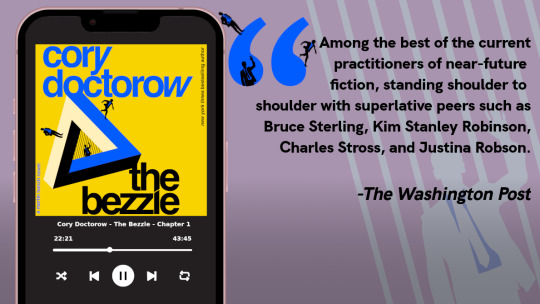
I'm Kickstarting the audiobook for The Bezzle, the sequel to Red Team Blues, narrated by @wilwheaton! You can pre-order the audiobook and ebook, DRM free, as well as the hardcover, signed or unsigned. There's also bundles with Red Team Blues in ebook, audio or paperback.

If you'd like an essay-formatted version of this post to read or share, here's a link to it on pluralistic.net, my surveillance-free, ad-free, tracker-free blog:
https://pluralistic.net/2024/01/24/everything-not-mandatory/#is-prohibited

Image:
Belem (modified)
https://commons.wikimedia.org/wiki/File:Desire_path_%2819811581366%29.jpg
CC BY 2.0
https://creativecommons.org/licenses/by/2.0/deed.en
#pluralistic#desire paths#design#drm#everything not mandatory is prohibited#apps#ip#innovation#user innovation#technological self-determination#john deere#twitter#felony contempt of business model
3K notes
·
View notes
Text

Small fanart for @bahbahhh's lovely fanfic desire paths that I have read an undisclosed amount of times
#zelda#botw#desire paths#link#sunrise#sheikah#zelink#my art#fanart#this started out as a sketch#but then I decided to slap some colour on it anyway#also I hope the gesture is accurate >>
66 notes
·
View notes
Text

#wales#nature#connahsquay#aesthetic#eerie#creepy nature#nature photography#night photography#photography#creepy#liminal#dark#eeriecore#paths#desire paths#sky#dusk
20 notes
·
View notes
Text
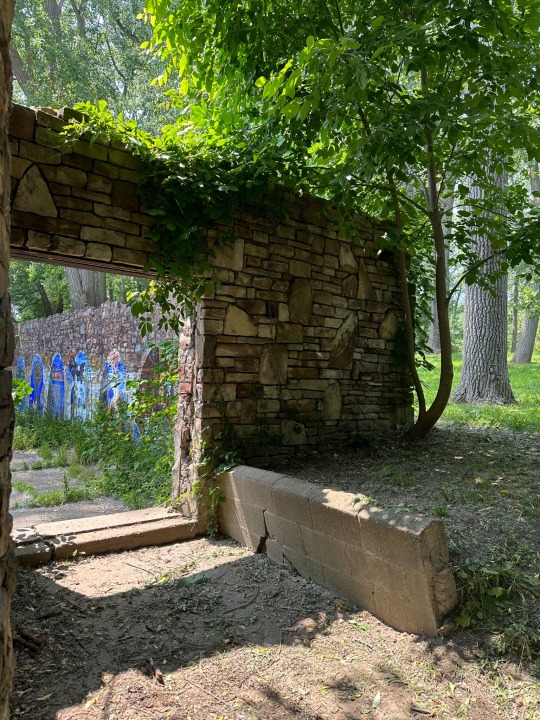
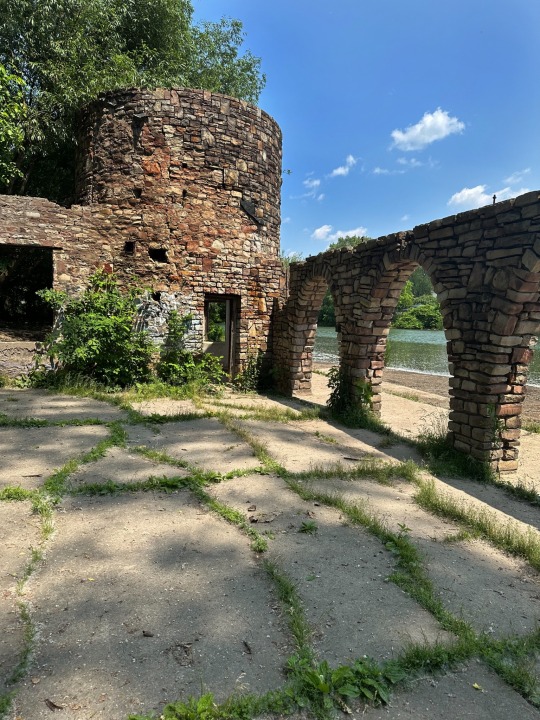
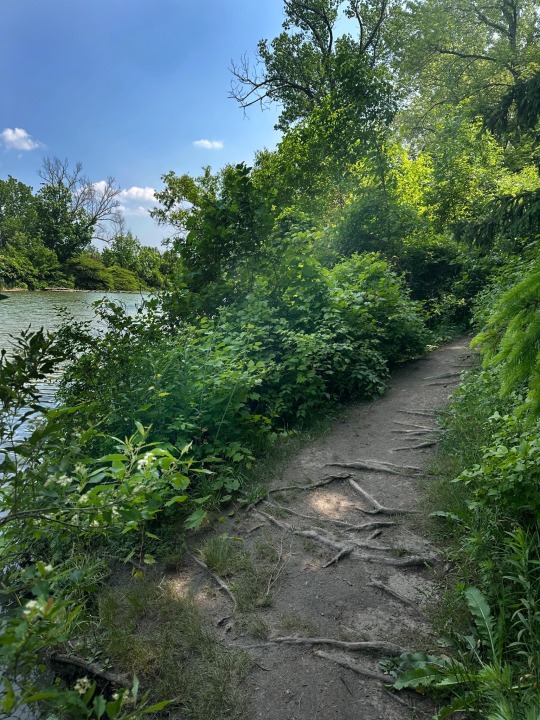

I found one of my favorite on this Earth
#personal#cute#nature#naturism#naturecore#forest#riverview#riverside#pathway#stonework#stone wall#structure#abandoned#abandoned places#abandoned buildings#desire pathway#desire paths#fairycore#fairy aesthetic#cottagecore#escapism#peaceful#relaxing#scenery#fantasy
54 notes
·
View notes
Text

#heading for a swim#(not off the cliffs with all those tides below - a bay further along the coast)#desire paths#cliffs
7 notes
·
View notes
Text
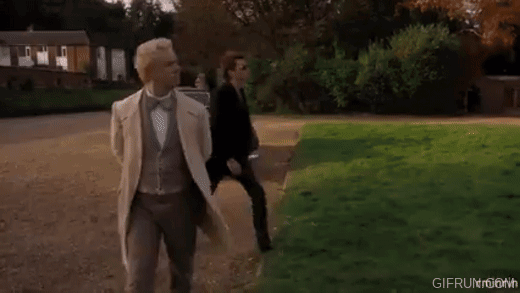
there are two kinds of people...
19 notes
·
View notes
Text

My little blog is 1 year old this month! To celebrate, I made a list of my favourite posts from the past year:
Wild About Mary Pratt
Wild About Desire Paths
Wild About Wonder
Wild About Umwelt
Wild About Plant Communication
#mary pratt#desire paths#wonder#umwelt#plant communication#this wild curiosity#happy anniversary to me
11 notes
·
View notes
Text
Every day, my love for desire paths grows stronger and stronger
#they're proof that most modern urban planning is complete bulls#and that the designers of those spaces are so far removed from the reality#of the regular human experience#that they don't know what the masses want#i just think they're neat#desire paths
2 notes
·
View notes
Text

Inktober 2023 Day 3: Path
Desire paths take months or even years to form. UNLESS the person taking a shortcut through the grass is the grim reaper.
#desire paths#inktober#inktober 2023#inktober day three#inktober path#spooky month#spooky season#halloween#grim reaper
5 notes
·
View notes
Text
D-D-D-Desire Path Review!
Monster energy got me hyped rn, so yeah its back, I found one that deserves a review, so lets go!
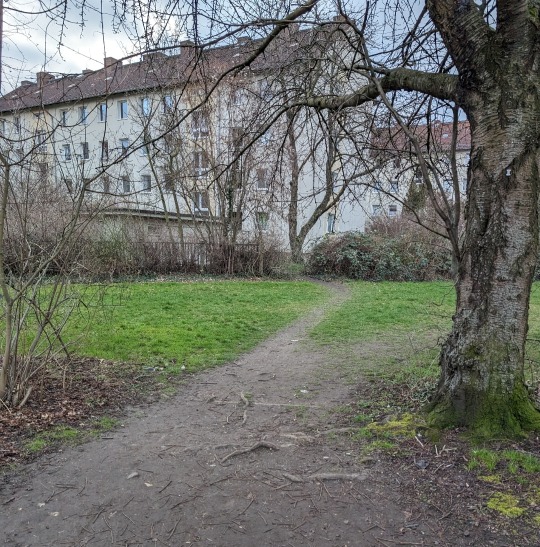
Allrigh, mhm, yea. That sure is a path, so.
First off I really like the overall texture and look of this one, the way it blend with the untrodden part of it, its just a very pleasant gradient.
You might be able to see that it goes in 2 directions, more prominently to the left tho. So to the left it goes to the entrances of the appartment building and to a sandpit where some kids were chilling. And to the right there was a little field with a really bad looking soccer goal and an unsupervised ball.
What this means, is that this is and will be a very nostalgic place for a lot of former kids. Just the whole aesthetic, you're going out with the neighbor kids, kicking a ball around, chilling around the sandpit, just doing stuff. Even tho I don't have these feeling for that path that stands in the middle of all that, I can still imagine.
So overall a very emotional one that a lot of people depend on, so lets rate this.
10/10
We fucken did it, the perfect path, and its such a good one at being the first perfect one.
So yeah im happy with this, anyways I hope you like my little ramble.
Ok thats it, byeeee!
#desire paths#city design#rambles#appreciation post#desire path review#random#random thoughts#dumb shit#dumb ideas#places#spots
2 notes
·
View notes
Text
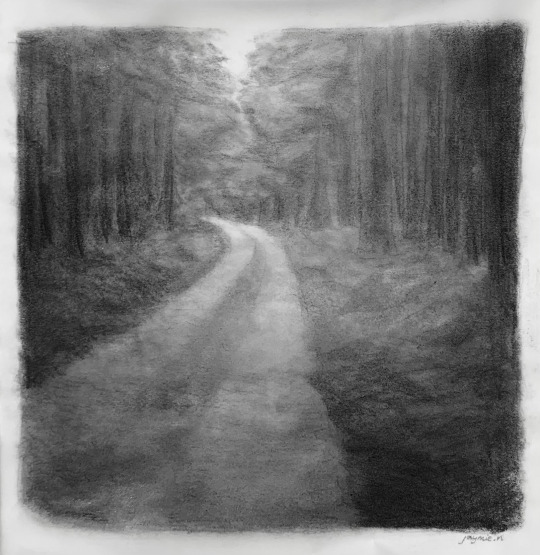
the path by @jay-fae (2023)
#artists on tumblr#australian gothic#trees and forests#naarm artist#naarm#melbourne#traditional art#artwork#drawing#desire paths#memorycore#tonalism#dark art
6 notes
·
View notes
Text

desire path out in the wild at my uni
#idk why they don’t just put in a sidewalk here tbh#the sidewalk goes in a rly roundabout way#desire paths
2 notes
·
View notes
Text
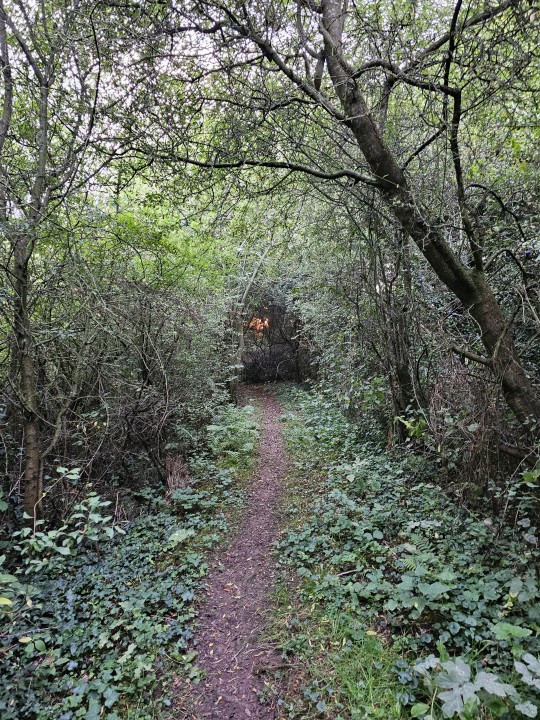
#nature#woods#woodlands#Shropshire#the shire#naturecore#sunset#trees#green trees#aesthetic#desire paths#lost#lost aesthetic#dark trees#goblincore#outdoors#nature photography
25 notes
·
View notes
Text
Death Stranding, and the Beauty of Footpaths
I’ve been playing a lot of a game called Death Stranding recently, the brainchild of Hideo Kojima. For the uninitiated, the long and short of the game is that you are a mailman, and your job is to deliver packages from point “A” to point “B,” mostly on foot, and despite whatever obstacles may stand in your way. What I find fascinating about the game, however, has little to do with the packages, but more so what the player leaves behind.
One thing about Death Stranding is that it has online connectivity, which makes it so that whatever structures you build in order to make your trips easier, also have a chance of helping others on their journeys. However, some structures in the game are more unintentional. Wherever a player travels, their footsteps are recorded. If one route is followed enough times, either by one or multiple players, it starts to wear down the terrain, eventually becoming a footpath. These pathways make traversal easier, and can help to plot delivery routes or to find more efficient ways to get around.
The reason I am writing about this is because I’ve been having a lot of existential worries about entropy recently. The constant, inescapable wearing down and degradation of things, despite how much we try and repair them. However, Death Stranding has shown me there is a kind of beauty to that. A footpath, worn into the ground, is a marker of every well-loved boot that walked that same path before. A physical testament to every porter who has chosen this path because it is the one that their predecessors chose, and because it is the trail that the first porter to come this way blazed. A footpath isn’t just a line or a route to follow. It is a living part of history, one which every person who walks along it is contributing to.
18 notes
·
View notes
